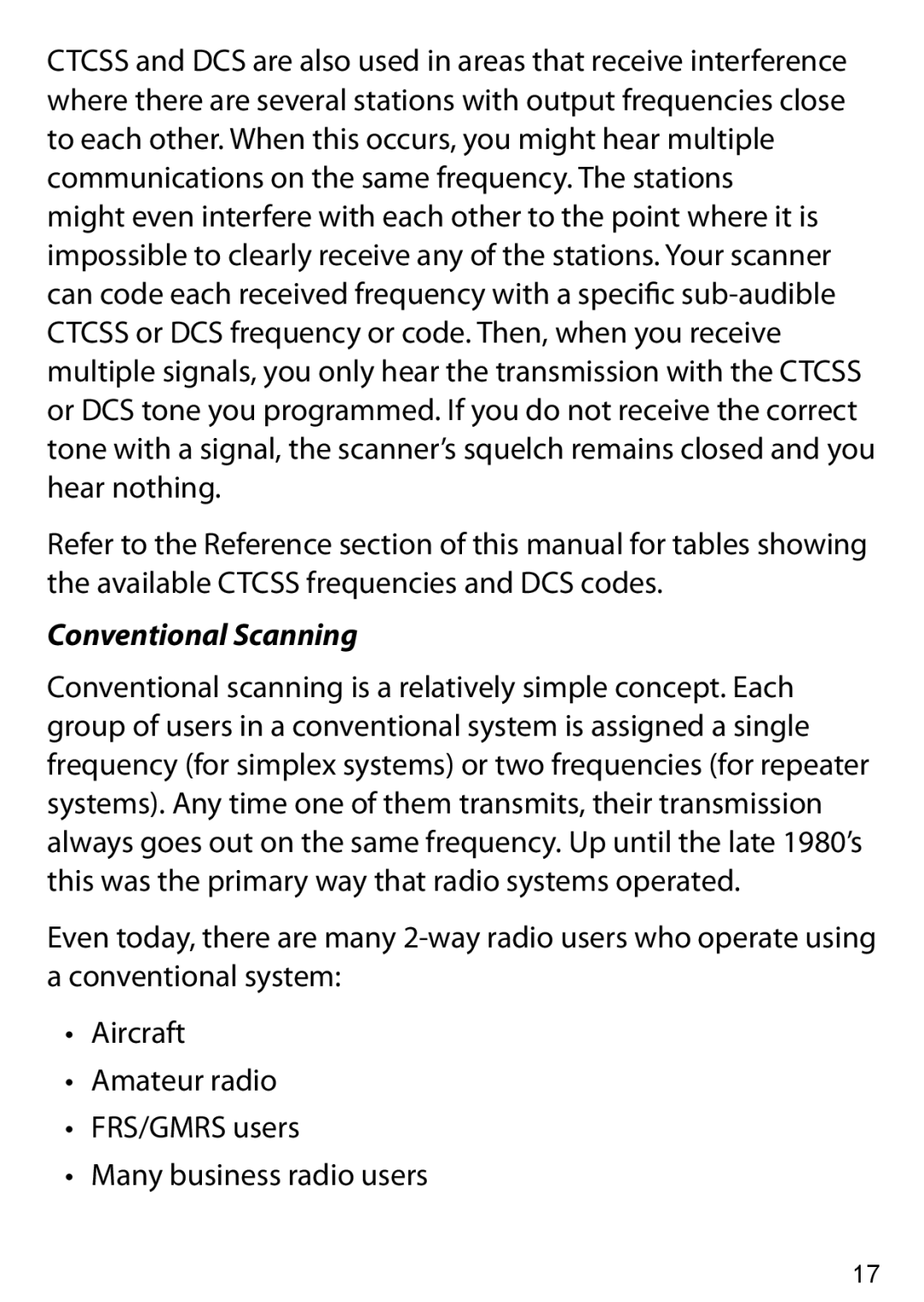CTCSS and DCS are also used in areas that receive interference where there are several stations with output frequencies close to each other. When this occurs, you might hear multiple communications on the same frequency. The stations might even interfere with each other to the point where it is impossible to clearly receive any of the stations. Your scanner can code each received frequency with a specific
Refer to the Reference section of this manual for tables showing the available CTCSS frequencies and DCS codes.
Conventional Scanning
Conventional scanning is a relatively simple concept. Each group of users in a conventional system is assigned a single frequency (for simplex systems) or two frequencies (for repeater systems). Any time one of them transmits, their transmission always goes out on the same frequency. Up until the late 1980’s this was the primary way that radio systems operated.
Even today, there are many
•Aircraft
•Amateur radio
•FRS/GMRS users
•Many business radio users
17
